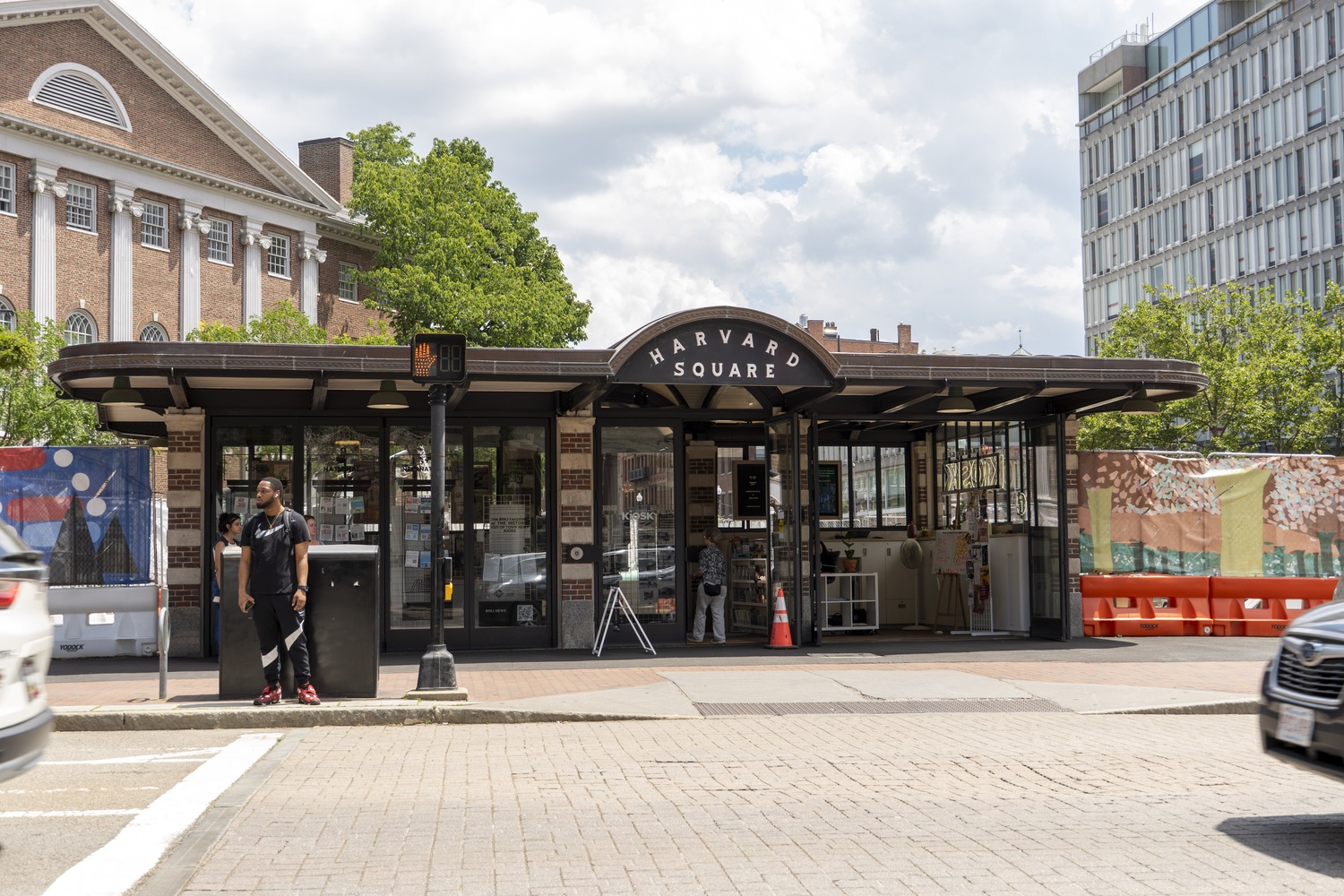
News
Summers Will Not Finish Semester of Teaching as Harvard Investigates Epstein Ties

News
Harvard College Students Report Favoring Divestment from Israel in HUA Survey

News
‘He Should Resign’: Harvard Undergrads Take Hard Line Against Summers Over Epstein Scandal

News
Harvard To Launch New Investigation Into Epstein’s Ties to Summers, Other University Affiliates

News
Harvard Students To Vote on Divestment From Israel in Inaugural HUA Election Survey
The Harvard Square ‘KiOSK’ is a Waste of Space — and $12.6 Million
The Harvard Square traversed by Julia Child, Bill Gates, and decades of Cambridge residents and students, is increasingly different from that which exists today. Amid the changes, one iconic, lamp-lit newsstand had long stood above Cambridge, reading “Out of Town” — a cultural landmark that presided over the Square as a news outlet from 1954 to 2019.
This year, that storied newsstand was officially replaced by the Cambridge KiOSK, touted as a “vibrant public space in the heart of Harvard Square, offering free programming, information, and a dynamic gathering place for all” — a reimagined “community space for the 21st century” — whatever that means. One look at this thing confirms that the old, eclectic Harvard Square has been strangled by the virulent spread of millennial gentrification once and for all.
The first time I toured the College as a high school junior, the once-beloved newsstand was already under construction — Out of Town News sold its last magazine on Oct. 31, 2019, over two years before my visit. By the time I started college, it appeared as though zero progress had been made on the obtrusive construction site.
As I passed the ugly, unperturbed corpse of what used to be Out of Town News nearly every day for the next three years, I naïvely assumed the structure was undergoing renovation. I dreamed of the day I — like the leagues of Harvard students and locals before me — might stroll up to the charming newsstand to buy that rare Italian Vogue, a pack of Marlboro Golds, and some mint gum.
My hope that the refurbishment would finally conclude before my high school graduation peaked last spring when, for the first time in four years, I actually saw construction workers on-site. However, when I approached the still largely unfinished Harvard Square intersection last May, I was instead greeted by the new-and-unimproved, sterilized Cambridge KiOSK.
I pass the KiOSK at least twice every weekday on my way to and from class. I have never seen a single visitor inside. The building is often instead occupied by a lone employee with little to do. It is no longer decorated with niche magazine covers, but by lukewarm, minimalist political installations that espouse the unflattering aesthetic of Instagram social justice infographics.
The chronic vacancy of this allegedly lively community center makes me wonder: Who asked for this? While the KiOSK claims to fill a cultural void, articles on the topic show that Out of Town News was greatly effective in fostering public connection, even well past its heyday. At its closing, numerous outlets quoted residents and employees attesting to Out of Town’s landmark significance and utility — past students, professors, and public figures alike heralded not only its diversity of publications, but its convenience.
The decision to exchange Out of Town News for the modern-day KiOSK seems to have arisen neither from necessity nor the previous tenant’s wishes. Though city staff reported that the owners of Out of Town News declined to extend their lease in 2019, the city had already pitched a $4.5 million redesign of Harvard Square Plaza as early as 2017. The company was informed they would have to vacate the kiosk because it would become a visitor information center.
The rise of digital media and slowing print sales may explain why Out of Town News bowed out of business, but these factors hardly justify the creation of the KiOSK — part of a project that turned the heart of Cambridge into an eyesore for five years and ultimately cost $12.6 million. The result? A plaza that remains unfinished and an empty establishment that appears to serve no one and fuels Harvard Square’s increasingly grotesque tourism industry. Further, the death of Out of Town marks one less locally-owned business in Harvard Square, a once-charming landscape now increasingly saturated with corporate chains.
Going forward, Cambridge city planners and the Harvard Square Business Association might take more seriously their duty to the Harvard community — and the character that once put our intersection on the map — before so easily succumbing to the dollar signs promised by passerby.
To me, the KiOSK represents not a center of thriving public life, but the ghost of Harvard Square’s once-endearing culture — one our city planners have rejected in favor of monoculture, disruptive tourism, and hollow promises of the very community they’ve helped to destroy.
Kate E. Ravenscroft ’26, a Crimson Editorial comper, is an English concentrator in Cabot House.
Want to keep up with breaking news? Subscribe to our email newsletter.

